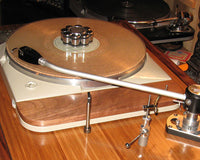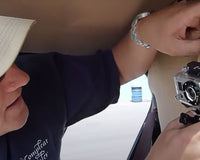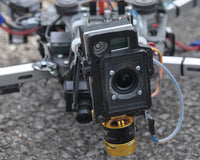Speakers vary in size, shape, and performance.The main aspect of a speaker is to listen to an audible sound. You may listen to music on your iPod or phone, or listen through a standalone speaker. Having high-quality speakers is also important for TVs or movie theaters. The music or movie that you listen to makes up an electric signal. This signal must be translated into an audible sound in order to hear it clearly. Translation occurs through an electromagnet. An electromagnet is best defined as a metal coil which creates a magnetic field after an electric current is moved through it. The coil acts as a magnet that is able to reverse the direction of the current that is inside the coil, which is responsible for flipping the poles of the magnet.
There are three necessary parts that make up any speaker. A cone, electromagnet (coil), and permanent magnet. The electromagnet is placed directly in front of a permanent magnet inside a speaker. The permanent magnet is permanently fixed, contrary to the mobile electromagnet. During the pulsing of electricity that passes through the electromagnet coil, a big change occurs. This change moves the magnetic field of the electromagnet, resulting in an attraction and repelling of the permanent magnet, vibrating back and forth. Paper or plastic in the shape of a cone is attached to the electromagnet which amplifies these vibrations, pumping sound waves. This is how you are able to hear sounds from a speaker.
The frequency of these vibrations controls how the sound is produced, involving the production of the pitch and amplitude, which affects volume. For example, if you turn a car stereo up loud enough, it is quite possibly that you will be able to see movement of the diaphragm that covers the cone. In order to produce high-quality sound that produces every frequency of sound in a piece of music, top-quality speakers are necessary. It is common for speakers to experience unwanted vibration. Isolate It! products help reduce that vibration with speaker decoupling. See the link below to read more.










